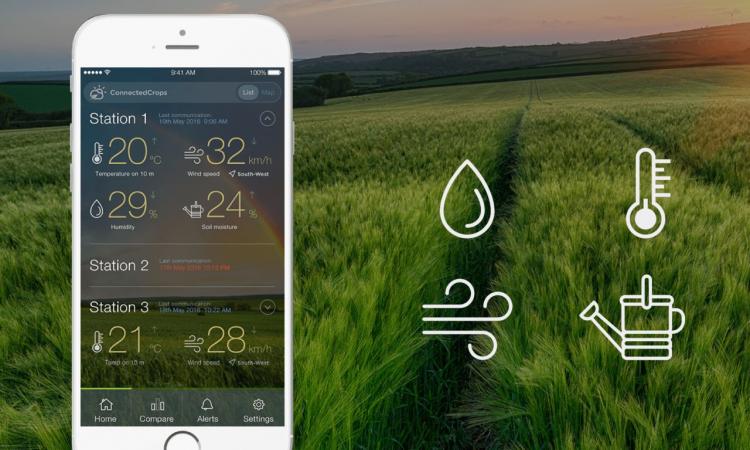
Agricultural extension and advisory services facilitate the transfer of knowledge, information, improved technologies and practices to farmers, farmer organizations and market actors. Research has shown positive effects of extension access when it came to knowledge, adoption, productivity, and economic returns for farmers. The high cost associated with face-to-face extension constrains effective service delivery to farmers, who are often widely distributed spatially.
Information and Communication Technology (ICT) enabled services have been increasingly advocated by extension practitioners as an alternative to conventional face-to-face approaches. Although many extension and advisory service providers are using "e-extension" and mass media approaches to improve their outreach to farmers and to improve farmers’ access to information, most of these initiatives are at early pilot stages and limited empirical evidence is available on the effectiveness of ICTs in these sorts of approaches. Further, there has been some debate on how appropriate these ICT approaches are, specifically their effectiveness in stimulating learning and getting farmers to adopt new or different agricultural practices.
Digitalization in agriculture has the potential to support agricultural transformation for millions of farmers. The paper‘Effectiveness of mobile agri-advisory service extension model: Evidence from Direct2Farm program in India’ examines the effectiveness of mobile as a novel approach to providing targeted and equitable agri-advisory services to farmers at scale. A cross-sectional survey of farmers registered on Centre for Agriculture and Bioscience International (CABI's) Direct2Farm (D2F) user database was undertaken using a combination of telephone interviews, household survey and focus group discussions covering six states in India.
CABI has been involved in using mobile technology to support farming in India since 2008. Their mobile agri-advisory services helped complement and extend the reach of existing extension efforts. The D2F service is a content repository containing agricultural fact sheets and short advisory voice and text messages for a range of crops and livestock. This repository is used (and can be used in future) to feed short, credible SMS and voice content to mobile Value Added Services (VAS) Providers and Mobile Network Operators (MNOs) in India, which can be delivered directly to smallholder farmers via their mobile phones. Content is developed and translated into local languages by the CABI content team and validated by the Subject Matter Expert (SME) before being fed into the content management system.
This paper presents the results of an effectiveness assessment of this D2F service at CABI. Effectiveness was measured on different parameters: farmer awareness of new practices, knowledge acquisition and retention, uptake of new technologies, and knowledge sharing. Proxy measures and anecdotal evidence were used to measure technology uptake and behaviour change, based on self-reporting from farmers during the study.
In this study, the effectiveness of D2F mobile agri-advisory services was estimated using four proxy measures:
- Awareness was measured by the number of farmers reached by information on new practices and technologies through D2F;
- Knowledge acquisition was measured by farmers’ reporting of understanding of information, and their perception of information relevance, timeliness, and reliability;
- Uptake of new technologies was measured by the number of new practices and technologies farmers applied after receiving messages - a measure of the proportion of knowledge put to use from what they learned through received messages; and
- Knowledge sharing was measured by the proportion of farmers who shared information with other farmers within their community, and their willingness to share information they received - an indicator of trust in the information source and content received.
Farmers adopted new practices
Results indicate that the majority of farmers receive information from various sources, most notably from fellow farmers (73%) and government extensions (58%). Mobile services were ranked fifth as a source of information, out of a total of seven identified. Nonetheless, there was evidence that CABI-D2F mobile services reached a large number of farmers in a short time compared to what could be achieved by traditional extension approaches, and the services significantly influenced farmers to take up new agricultural practices.
CABI D2F service analytics revealed that a core of around 40% of the initial 400,000 registered farmers became active users of the service, regarding it as a valuable and credible source of agricultural information. Small-scale farmers, women, and the elderly were less likely to use mobile service, showing a preference for traditional extension approaches. This digital divide may be attributed to low literacy levels, and/or ownership or control of mobile phones. Results raise two issues:
- How mobile services can be customised to differences in gender and social realities; and,
- How mobile services can be effectively monitored to ensure messages are being received by targeted users.
Through the telephone survey and from community visits, the study gathered qualitative insights of farmer perceptions of information relevance, timeliness, and reliability.
There was evidence that farmers were willing to take action and adopt new practices based on the information they received through mobile services.
However, due to the number of other service providers and people's difficulties in recalling the exact origin of messages, it is still problematic to definitively associate reports of action with a specific service, although the telephone survey provided a somewhat more nuanced picture.
Conclusion
Despite the digital divide, results confirm that once messages reached service users, there was good evidence of the service being effective and well received, leading to users implementing the new evidence-based farming practice. The mobile service is clearly more than capable of providing timely, relevant and accessible advice and is valued by those who have engaged with it, but it needs to be made more interactive with a clear monitoring system to ensure the messages reach the intended audience.
The propensity demonstrated by farmers to share CABI-D2F messages and recommend the service, is a useful insight into the potential for the service to ‘reach’ far beyond direct service users, given enough time. However, farmers expressed a preference for text messages over voice messages, because they could consult technical experts if the messages were not clear.
Access the full paper here